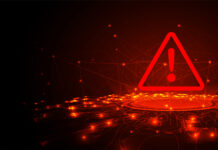
Health awareness was celebrated across the globe last Friday on World Health Day, an event sponsored by the World Health Organization.
But humans aren’t the only ones who suffer from health issues—so do computers. Here is a look at some comparable characteristics of the two species.
Health Checks. Humans require assurance from their doctors from time to time that they are fit and healthy. So we schedule regular health checks to ensure we’re on the right track.
Computers should likewise undergo regular health checks. This can be done by regularly scanning for known vulnerabilities and getting them patched.
Support network. Humans strive for social interaction. We strive to maintain a good support network so we can share emotions and feelings with others. A sympathetic friend, or trained health professional, can read our audit trail, so to speak, to diagnose the ailment.
Computers are their own best friends. They can help make such diagnoses by supplying audit trails. Traffic logs can be monitored and analyzed to pinpoint any weaknesses or anomalies.
Preventative measures. Humans, right from birth, receive inoculations that help prevent them from being exposed to known viruses and reduce the risk of being exposed to life-threating illnesses.
Computers rely on a basic level of anti-virus software that uses scanning technology to detect and block known threats in real-time and provide a layer of security that could help prevent life-threatening attacks on the system.
Tech breakthroughs. Wearable technology, such as fitness trackers, help humans live healthier lives, while also giving doctors another means to diagnose health problems at an early stage.
Computers have Security Configuration Management (SCM) systems that can monitor endpoints and detect unauthorized changes. Administrators can then be alerted to take appropriate actions.
As we humans stay attuned to our health, so too should companies nurture their networks. Vulnerability scans can isolate weakly protected computers, as well as machines on which unauthorized changes have been made. Making sure all systems are patched to the latest security releases is an essential layer of protection.
This article originally appeared on ThirdCertainty.com and was written by Paul Norris.










